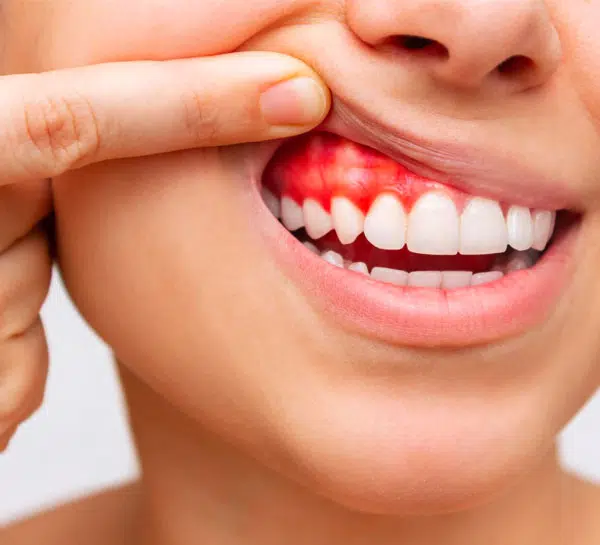
Overview
Pyorrhoea, or periodontal disease, to give it a proper medical term, is a disease of the gums. It is one of the most widely prevalent diseases. It affects the membrane surrounding the roots of the teeth and leads to loosening of the teeth, pus formation, and shrinkage of the gum. This disease is the primary cause for tooth loss among adults.
Causes and Symptoms of Pyorrhoea
The gums become tender, and on pressing, pus oozes out along the margin of the teeth. Pus from the cavities continually finds its way into the stomach. When the disease is far advanced, the gums become swollen, and the stomach, being dosed with increasing quantities of pus, does not function properly. A sepsis may appear in various forms; digestion gets disturbed, liver trouble sets in, and the whole system is adversely affected.
Pyorrhoea is triggered by bacterial activity. A thin layer of harmful bacteria is continuously building up on our teeth. If it is not removed by tooth-cleansing, especially after meals, it forms an organised mass on the tooth surface in a short time. This is referred to as a ‘bacterial plaque’. When accumulated, bacteria in plaque produce many toxins which irritate the gums, causing them to become inflamed, tender, and prone to bleeding easily. The bacterial activity is, however, facilitated by the lowered vitality of the system. Other factors contributing to the development of pyorrhoea include injury to the gums and supporting structures by physical and chemical irritants in the mouth, incorrect brushing, stagnation of food particles, and improper use of toothpicks.
Home Remedies for Pyorrhoea
1. Guava:
Chewing unripe guava is an excellent tonic for the teeth and gums. It stops the bleeding from the gums due to its styptic effect and richness in vitamin C. Chewing the tender leaves of the guava tree also helps in curing bleeding from the gums and keeps the teeth healthy. A decoction of root-bark can also be beneficially used as a mouthwash for swollen gums.
2. Lemon and Lime:
The regular use of lemon and lime is useful in pyorrhoea due to their high vitamin C content. They strengthen the gums and teeth, and are very effective in preventing and curing acute inflammations of the gum margins.
3. Orange:
The use of orange has also been found beneficial in the treatment of pyorrhoea. This fruit should be eaten regularly and its skin rubbed over the teeth and gums. This will improve the condition.
4. Pomegranate Rind:
Powder of the dry rind of pomegranate, mixed with pepper and common salt, can be applied as a very good dentifrice. Its regular application strengthens the gums, stops bleeding, and prevents pyorrhoea.
5. Spinach Juice:
The juice of raw spinach is another valuable remedy for the prevention and treatment of pyorrhoea because of its beneficial effect on teeth and gums. This effect is greatly enhanced if spinach juice is taken in combination with carrot juice. Both spinach juice and carrot juice should be taken in quantities of 125 ml each daily. A permanent aid for this affliction has been found in the use of natural raw foods, and in drinking an ample quantity of carrot and spinach juice.
6. Lettuce:
Lettuce has proved useful in preventing pyorrhoea. The leaves of this vegetable should be chewed every day immediately after meals for this purpose.
7. Wheat:
Wheat is especially valuable in the prevention and treatment of pyorrhoea. Wheat chapatis are usually taken with other foods, and hence, the other food also gets chewed properly. This not only provides the needed exercise for the teeth and gum but also aids in digestion.
Diet in Pyorrhoea
The patient should begin the treatment with a short juice fast for three to five days. Oranges and carrots should be used for juices. After the juice fast, the patient should spend the next three to five days on an exclusive fresh fruit diet, taking three meals a day of juicy fruits. Thereafter he may gradually embark upon a balanced diet, with emphasis on fresh fruits, green salads, whole meal bread, properly cooked vegetables, cheese, nuts, and milk. White bread, white sugar, and all refined and tinned foods must be completely given up. Condiments, sauces, alcohol, coffee, and strong tea, as well as meat and other fresh foods should also be avoided.
Other Measures in Pyorrhoea
During the juice fast, the bowels should be cleansed daily with a warm-water enema. Daily dry friction and a hip bath, as well as breathing and other exercises, should form a part of the morning routine. A hot Epsom salts bath taken twice weekly will also be beneficial.
